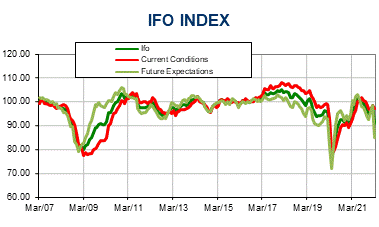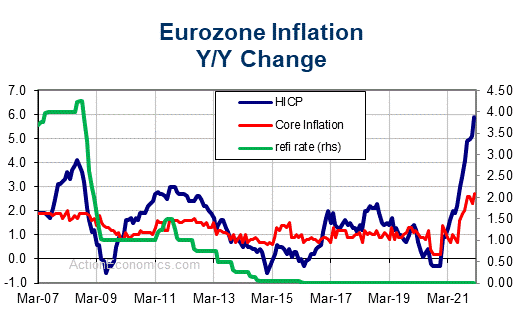The ECB policy meeting on December 13 will be a closely watched event, with the ECB set to confirm the future of QE and the reinvestment schedule. The latter will become more important from next year and is now a cornerstone of the central bank’s forward guidance, alongside the rate outlook. Comments from ECB officials last week confirm that the central bank remains on track to phase out net asset purchases this year, despite the likely downward revision to growth forecasts. For now it seems a new round of TLTROs are also not on the agenda, but Draghi’s message will likely be dovish leaning, especially as Italy and Brexit jitters continue to cloud over the outlook, and more precisely if the Brexit vote in the UK parliament on December 11 is negative.
Prime Minister May and her allies are making an all-out effort to sell the Brexit deal, but it still looks likely that it will be voted down in the House of Commons vote on December 11. Labor, which is the principal opposition to the government, Northern Ireland’s DUP party (the kingmakers of the Tory-led minority government), and a minority of Tory party members (mostly from the Eurosceptic Brexiteer cabal) are all set to vote against the government.
In the mix has been the BoE warning of a significant negative impact on the economy in the event of a no-deal Brexit, which followed Chancellor Hammond’s remarks that all versions of Brexit will leave the economy worse off. This backdrop should continue to hold Sterling down, although at the same time the risks for there being a disorderly no-deal Brexit scenario appear to be low as the broad majority of members of parliament are staunchly against letting this happen.
Turning back to Europe, the fact that ECB intends to phase out QE in December has been part of the central guidance for a while now, but so far Draghi has kept the door to an extension ajar amid volatility on financial markets and signs that global trade tensions are having a bigger impact on the Eurozone’s growth outlook than previously expected.

ActionEconomics.com
Against that background, ECB will at least put a stop to the ongoing extension of its balance sheet, but Draghi and Praet in particular continue to argue that the economy still needs substantial monetary support. This will be provided on the one hand by the fact that QE now looks set to be part of ECB’s regular monetary policy toolkit. Furthermore, ECB guidance on rates is likely to remain that hikes are off the agenda through the summer of next year.
There had been some speculation that ECB may announce another round of TLTRs, targeted long term tenders, which start to mature, leaving banks with the problem of having to find alternative financing at a time when ECB is starting to withdraw support. At least for now, however, it seems this is not something ECB is overly concerned with, although it is an option central bankers still have if they see that the expected draining of excess liquidity from the system is causing problems.

This will leave the focus on the details of the ECB’s reinvestment schedule. Central bankers have been eager to stress that as the ECB’s portfolio of assets matures, the reinvestment of redemptions will see ECB continuing to support markets and indeed, redemptions over the October 2018-2019 period amount to more than EUR 220 bln. Even against ECB’s hawks, the ECB is likely to repeat again the promise to keep asset holdings unchanged for the foreseeable future. Meanwhile, more flexibility in the schedule for reinvestments could also give central bankers more room for strategic placing of orders to smooth out markets in times of heightened volatility, as currently seen in Italian markets.
Hence, a signal for markets that in the short term, the ECB can step in, is likely to remain Draghi’s main message on Wednesday December 5. President Draghi’s promise to do all it takes to safeguard the EUR remains legendary and as the ECB finally prepares for the end of asset purchases, Draghi is likely to remain constant, especially as Italy jitters, the lingering trade tensions with the US and the still real risk of a hard Brexit are all clouding over the outlook.
Indeed, there is some risk of an even more dovish leaning ECB meeting than currently expected, if the Brexit vote in the UK parliament doesn’t go according to plan, as seems likely.
The London vote is scheduled for next Tuesday. Not surprisingly then the government’s strategy is not to celebrate the deal as a wonderful opportunity but as an exercise in damage limitation. Under the government’s own assessment of the Brexit outcome the economy will be worse off under May’s deal than it would have been if Britain had stayed in the EU, with GDP 1-2% lower over 15 years. However, the government also now admits what Remainers have been saying all along, namely that the economy will be worse off under any scenario that sees the UK outside of the EU and that the Chequers deal would still leave the economy significantly better off than a no-deal scenario.
The so called “Project Fear” has now become the government’s main argument. Hard core Brexiteers won’t agree and continue to flaunt the prospect of major trade deals and the vision of a Singapore on the Thames, but it seems as much as there is a majority against May’s deal there is also a clear majority against a no-deal Brexit and indeed any other alternative scenario and that is what the government seems to be banking on.
There are reports in fact that May is softening her initial reaction to the idea that the parliament could vote on a number of different alternatives to her deal, which would include that of a hard Brexit, a second referendum, new elections, or an abandoning of Brexit altogether. This would indicate that there is no real scenario in which what is on the table now will go ahead, as none of these are likely to win a majority. The Labour opposition may be voting for new elections, but with the Conservatives looking weak in the polls and already reliant on the support of the DUP they are unlikely to risk crashing out of power.

Despite all the noise in the press created by hard line Brexiteers, the no-deal option is also unlikely to find a majority as the failed bid to oust May last week highlighted. Another referendum meanwhile is also not high on anybody’s agenda, although Labour seemed to soften to the idea at least as a fall back option.
The question remains as to whatthat referendum would look like. Would the electorate be able to vote for or against May’s Brexit deal, or would this be a rerun of the initial vote on EU membership, as the Remainers have been demanding? The latter option, if put to parliament, is also unlikely to get a majority.
If parliament really runs through all these possible alternative scenarios May’s plan could really look like the only feasible alternative – the other being a Norway-style solution, that not only restricts trade options, but also fails to deliver the control over immigration that was clearly at the heart of the original Brexit referendum.
A Guardian report suggests that the Norway option would be offered by EU leaders following a negative vote in parliament. There is already a regular summit scheduled for December 13/14 and a failed parliamentary vote in London would likely turn this into yet another Brexit summit, with EU-27 leaders debating on the first day and May joining the fun on December 14.
The fact that the vote is now on December 11, i.e. 2 days before the ECB meeting, rather than December 12, the date that had originally made the rounds, could suggest that there is indeed some sort of interchange, as this at least gives President Draghi 1 more day to judge the situation although his focus will likely be more on the uncertainty about the longer term impact on overall growth in Europe in the case of a no-deal Brexit, which still is not the main issue at the ECB.

As BoE has one more week to see whether it needs to tweak its guidance, Carney’s immediate problem will likely be further pressure on the Pound, depending on how the vote is packaged.
Click here to access the HotForex Economic calendar
Andria Pichidi
Market Analyst
HotForex
Disclaimer: This material is provided as a general marketing communication for information purposes only and does not constitute an independent investment research. Nothing in this communication contains, or should be considered as containing, an investment advice or an investment recommendation or a solicitation for the purpose of buying or selling of any financial instrument. All information provided is gathered from reputable sources and any information containing an indication of past performance is not a guarantee or reliable indicator of future performance. Users acknowledge that any investment in FX and CFDs products is characterized by a certain degree of uncertainty and that any investment of this nature involves a high level of risk for which the users are solely responsible and liable. We assume no liability for any loss arising from any investment made based on the information provided in this communication. This communication must not be reproduced or further distributed without our prior written permission.



















